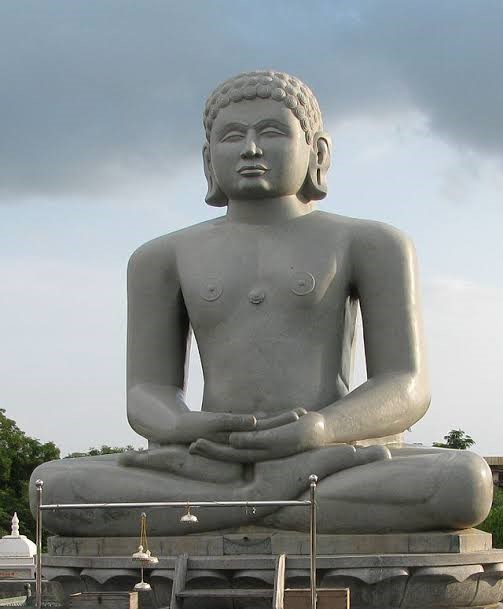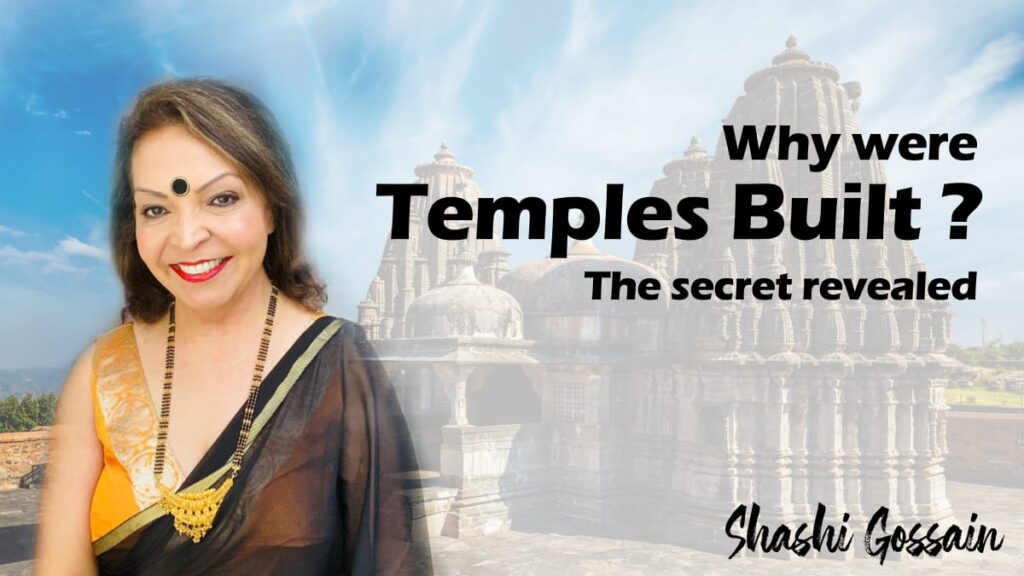Which came first Jainism or Hinduism?
Hinduism is over 5,000 years old, & along with history, there were many religions that used the basis of Hinduism and made a few modifications & new ideas to evolve into a new religion. One of such religions is Jainism, which arose approximately 600 BCE.
The Indian Supreme Court in 2005 ruled that Jains, Sikhs, and Buddhists are part of the broader Hindu fold, as they are Indic religions and interconnected to each other, although they are distinct religions.
On 30 January 2014, the Government of India awarded the status of a “minority religion” to the Jain community in India.
What’s the meaning of Jain?
“Jain” is derived from the Sanskrit word “Ji,” meaning to conquer, referring to a human being who has conquered all inner passions (like anger, attachment, greed and pride) and possess pure infinite knowledge. Such an enlightened person is called Jina & the followers are called Jains.
Who founded Jain religion?
Jainism is considered as the world’s most peace-loving religion because of its strict doctrine of non-violence, with approximately 6 million followers, mainly in India.
Jains do not have a historical founder. The first Jain figure was Parshva, a teacher who lived in the 7th century BCE and founded a community based upon the abandonment of worldly concerns.
What are the main beliefs and practices for Jains?
There are some differences between Hinduism & Jainism. Jains promoted ascetism, abandoned Vedic rituals and renounced domestic & social action.
Jainism core belief is based on liberating the soul. The body and the soul are separate from each other. Jain Dharma teaches that the way to liberation is to live life of harmlessness & renunciation.
The spiritual ideas were guided through 24 leaders, with Lord Mahavira, the last tirthankara, who gave the present form of Jain philosophy, around 600BCE
Who is Mahaveer What are his teaching?

Mahavira was the son of a chieftain of the Kshatriya (warrior) class. At age 30 he renounced his princely status to take up the ascetic life. Mahavira spent the next 121/2 years following a path of solitary and intense asceticism. He then converted 11 disciples called ganadharas, to spread the teachings. Mahavira is believed to have died near modern Patna.
Two of his disciples, Indrabhuti Gautama and Sudharman, (both of whom survived Mahavira), are regarded as the founders of the historical Jain monastic community,
and a third, Jambu, is believed to be the last person to gain enlightenment.
Who is tirthankaras in Jainism?
Tirthankara is a saviour and spiritual teacher of the dharma. All Tirthankaras were born as human beings but they have attained a state of perfection or enlightenment through meditation and self-realization. They are the Spiritual leaders of Jains.
What are the 4 principles of Jains?

The main principles of Jain dharma are:
- Non-violence
- Many-sidedness
- Non-attachment
- Abstinence from sensual pleasures
Devout Jains take 5 vows:
- Non- violence
- Truth
- Not stealing
- Celibacy
- Non-possessiveness
What are the basic beliefs of Jainism?
Jain’s beliefs:
- The supreme rule is non-violence. Every act by which a person directly or indirectly supports killing or injury is seen as act of violence, which creates harmful reaction or karma.
- They are strict vegetarians. Strict Jains do not eat root vegetables such as potatoes, onions, roots and tubers to prevent injuring small insects and microorganisms; and also, to prevent the entire plant getting uprooted and killed. the bulb is seen as a living being, as it is able to sprout.
- Jains will wear masks and will take great pain to ensure they do not harm or kill any living animal including insects.
- Humans, Plants & Animals contain living souls. Each soul is of equal value & should be treated equally with respect. The function of souls is to help one another. This makes them more emotionally intelligent. They develop empathy with whom so ever they meet. They are forbidden to drink alcohol, due to its detrimental effect on the mind and soul.
- Fasting is a way of life, to enter the mentality of self-discipline to control their hunger & overcome desires.
- There are no Gods or spiritual beings that will help humans. It is based on self-help.
- All souls who have achieved the natural state of
- infinite bliss
- infinite knowledge
- infinite power
- infinite perception is regarded as God in Jainism.
- Believe in re-incarnation & seek to attain ultimate liberation (release of birth-life-rebirth cycle).
- To accumulate good karma that leads to better rebirth & a step closer to liberation. The immortal soul lives forever in a state of bliss.
- The liberation (moksha) of the soul can be achieved through paths of 4 jewels:
- Correct view (faith, accepting truth of the soul)
- Correct Knowledge (undoubting knowledge of the tattvas)
- Correct conduct (behave according to the 5 vows)
- Correct ascetism (belief in ascetic practice)
- Jains believe that it is possible for a human to attain knowledge of Self & universe through a sixth sense of the mind. The exact procedures are written in the sacred texts.
- They do not believe that universe was created, but was always there.
- They do not believe that there’s a creator, governor, judge or destroyer of the universe.
- Jainism has no priests. They are led by monks & nuns, who lead very strict ascetic lives.
- Their daily prayers can be done at home or in wooden temples, and largely focus on chanting mantras.
What are the two sects of Jainism What is the main difference between them?
It has 2 main divisions, which are run by monks & nuns, who live a very simple, austere life.
- Digambaras: reject clothes & live naked as they are not allowed to have any possessions in order to live a totally ascetic life. The nuns wear simple white clothes.
- Swetambaras: wear thin white robes
Monks and nuns depend on charity & local Jains regard it as a duty to provide food and other necessities of life for monks and nuns. They will only eat between sunrise & sunset. The monks are bald because each strand of hair is pulled out as a form of penance.
They believe that the soul has 3 qualities:
- Consciousness
- Bliss
- Vibrational energy.
The vibrational energy draws karmic particles which get attached to the soul, which travels with the soul in rebirths.
The cycle of rebirths has a definite beginning & end.
How was the universe created according to Jainism?
Jain philosophy: the correct faith means recognising that the universe is made up of:
- Souls or living beings (jiva)
- Time & Space (ajiva)
- Matter (aggregate containing colour, taste, smell, touch)
- Karma flows in the soul (asrava)
- Karma gets attached to the soul (bandha)
- Forms of good activity (punya)
- Forms of bad activity (paap)
- the fact that flowing of karma should be blocked (saṃvara)
- the fact that karma that has flowed in should be annihilated (nirjarā)
- the fact that once all karmas have been eliminated, final liberation from the cycle of rebirths takes place (mokṣa).
- Reality or truth is the framework for salvation.
What do Jains believe happens after death?
Jains believe that each soul goes through 8,400,000 births as they circle through samsara & go through 5 types of bodies:
- Earth bodies
- Water bodies
- Fire bodies
- Air bodies
- Vegetable life
Harming any life form is a sin, with negative karmic effects. Souls evolve to a higher state or regress according to their karmas.
When an evil act is carried out intentionally, the soul will never attain moksha. A liberated soul has gone beyond Samsara & remains there eternally.
Jains believe Time is eternal, without a beginning. The cosmic wheel of time rotates non-stop. The interaction of time with universe, body & matter explains life, living, death & rebirth.
They believe correct knowledge is based on:
- Perception
- Inference
- Testimony (Word of scriptures)
Knowledge is divided into 5 kinds:
- Enlightenment
- Scriptural knowledge
- Sensory knowledge
- Clairvoyance
- Telepathy
Jainism, similar to Hinduism, but got its own distinct qualities!



